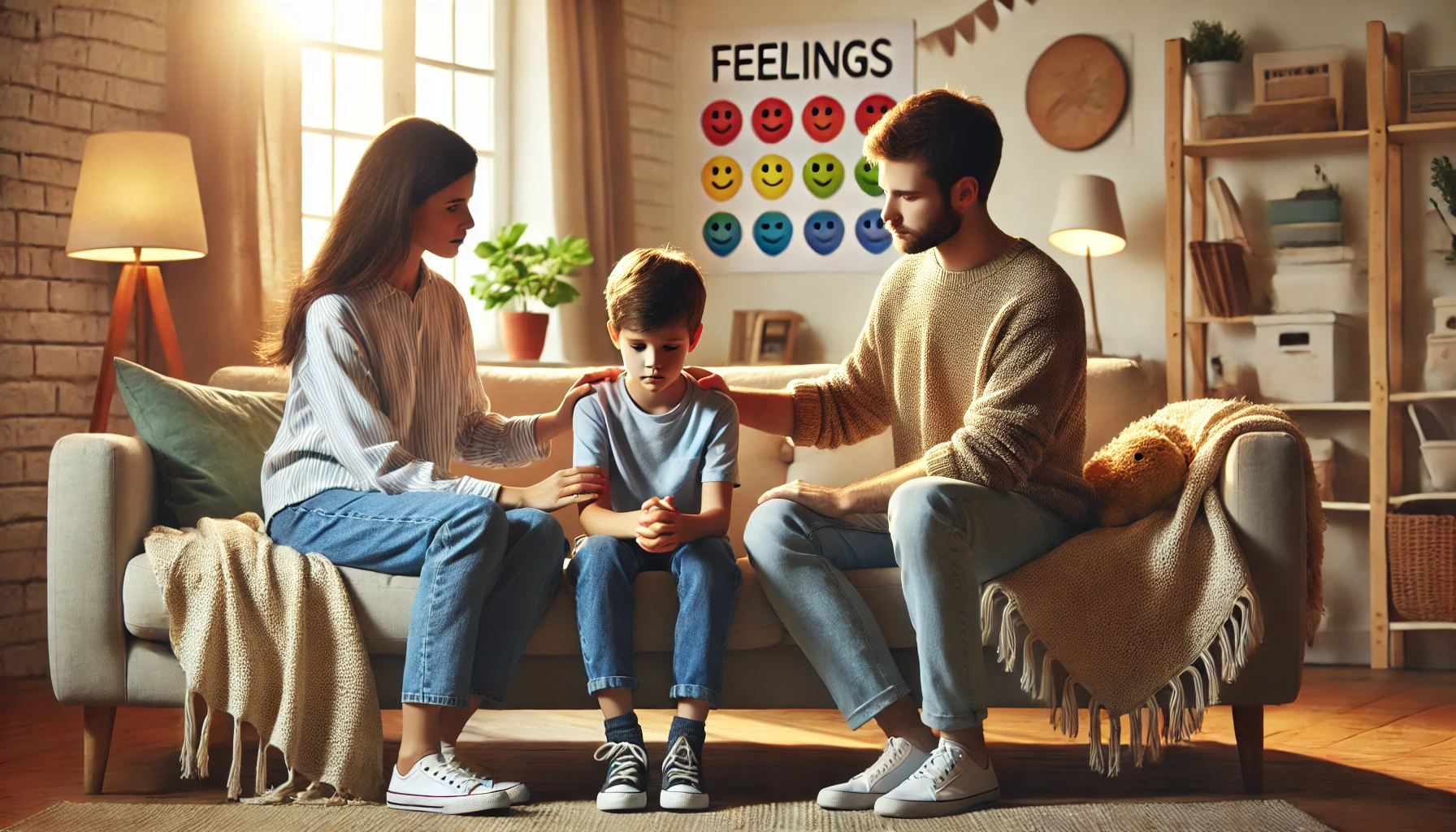Emotional intelligence — the ability to recognize, understand, and manage emotions — is one of the most important skills a child can learn. It affects how they build relationships, handle stress, and solve problems throughout life. And the best place to start developing this skill? Right at home.
With consistent support and simple everyday practices, parents can help children become more emotionally aware, resilient, and empathetic.
What Is Emotional Intelligence?
Emotional intelligence (EI) includes five key components:
- Self-awareness: Knowing and naming your own emotions
- Self-regulation: Managing feelings in healthy ways
- Motivation: Staying focused and optimistic
- Empathy: Understanding how others feel
- Social skills: Communicating and interacting positively with others
Building EI in early childhood helps children succeed not just academically, but socially and emotionally, too.
Why Emotional Intelligence Matters for Children
- Improves behavior and decision-making
- Helps handle frustration and disappointment
- Encourages positive relationships with peers and adults
- Supports academic success and focus
- Promotes mental well-being and self-confidence
Children with strong emotional intelligence are more likely to express themselves clearly, resolve conflicts calmly, and show empathy toward others.
How Parents Can Teach Emotional Intelligence
1. Name and Normalize Emotions
Use everyday situations to label feelings:
- “You look frustrated because the blocks fell down.”
- “I feel proud when I finish something difficult.”
Naming emotions helps children understand and accept them.
2. Validate Feelings, Even the Tough Ones
Instead of saying “Don’t cry,” try:
- “It’s okay to feel sad when things don’t go your way.”
- “I hear that you’re angry — let’s take a deep breath together.”
This teaches kids that all emotions are normal and manageable.
3. Model Emotional Intelligence Yourself
Children learn most by watching you. Show them how you manage your emotions:
- “I’m feeling overwhelmed, so I’m going to sit quietly for a minute.”
- “I got frustrated, but I took a few deep breaths and now I feel better.”
When adults model calm responses, kids learn to do the same.
4. Create a Feelings Chart or Emotions Corner
Have a space with pictures or drawings of different facial expressions and emotions. Ask your child to point to how they’re feeling that day.
This builds emotional vocabulary and awareness.
5. Use Books and Stories to Talk About Emotions
Stories are a safe way to explore big feelings. Ask questions like:
- “How do you think the character felt?”
- “What would you do in that situation?”
Books like The Color Monster or When Sophie Gets Angry – Really, Really Angry are great conversation starters.
6. Practice Calming Techniques Together
Teach simple tools to manage strong emotions:
- Deep breathing (“Smell the flower, blow out the candle”)
- Counting slowly to 5
- Hugging a stuffed animal
- Quiet time in a cozy corner
Do them together until your child can use them independently.
7. Praise Effort in Handling Emotions
Instead of only praising outcomes, say things like:
- “I’m proud of how you used your words instead of yelling.”
- “You did a great job calming down when you were upset.”
This builds emotional confidence.
Activities That Foster Emotional Growth
- Emotion Charades: Act out feelings and guess them
- Draw Your Feelings: Let kids use colors and shapes to express moods
- Mirror Play: Practice facial expressions together
- Daily Check-In: Ask, “How are you feeling today?” during meals or bedtime
- Gratitude Jar: Add notes about what made them happy or thankful
Handling Emotional Outbursts
Even with strong emotional tools, outbursts will happen. When they do:
- Stay calm — your calm helps regulate theirs
- Acknowledge their feelings — “I see you’re very upset”
- Offer a safe space — a cozy corner, hug, or quiet time
- Talk after the storm — “What can we try next time?”
Emotional regulation is a skill that develops with time and repetition.
Helping Children Grow from the Inside Out
By nurturing emotional intelligence at home, you’re helping your child become more self-aware, kind, and resilient. These are lifelong traits that support not only happiness and connection — but also the ability to face challenges with confidence.
Remember: children may forget what we say, but they remember how we made them feel. Teaching them to understand and respect their emotions — and those of others — is one of the greatest gifts we can offer.
